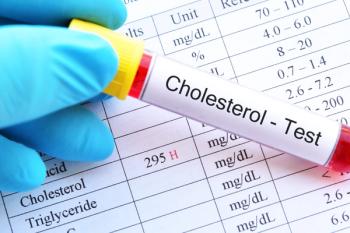
Study: COVID-19 Pandemic Reduced Cancer Screenings by Millions in 2020
Hispanic and individuals with lower incomes experienced sharper drops, reflecting emerging barriers and exacerbation of long-standing hurdles, analysis results indicate.
The number of women in the United States who have reported having a
The study, published in the Journal of the American Medical Association Open Network, is the first of its kind to evaluate the impact of the COVID-19 pandemic on cancer screenings nationally using population-based data.
“COVID-19 pandemic had an immediate impact in March and April of 2020, as screenings initially dropped by close to 80%,” Ahmedin Jemal, DVM, PhD, senior vice president of surveillance and health equity science at the American Cancer Society said in a statement.
“Many people caught up on screenings later in 2020, but overall, the COVID-19 pandemic kept screenings down over the course of the entire year. As we move forward, it’s crucial to get people back into their doctor’s offices to get screened,” Jemal said.
The study also found that between 2018 and 2020, colonoscopies for colorectal cancer detection dropped by 16% for both men and women but was offset by an increase in stool testing of 7%.
This showed promise in at-home testing to maintain population-wide screening rates during a major health care disruption, investigators said.
Additionally, Hispanic and individuals with lower incomes experienced sharper drops in breast and cervical cancer screening within the past year, which reflects emerging barriers and exacerbation of long-standing hurdles to cancer screening. Asian and Pacific Islander women also had a drop of 27% in breast cancer screenings in the past year, which is the largest drop seen in any race.
Hispanic women had a 17% drop in cervical cancer screenings in the past year.
“The impact of these drops on stage at diagnosis and survival is not yet known, but it is something we need to monitor closely,” Jemal said. “It is imperative that we understand the impact of lower screening rates on cancer outcomes among people of color and people of lower socioeconomic standing and also work to improve access to health care and cancer screenings for everyone.”
Further, the drop in screening in the past year nearly doubled for individuals who were not high school graduates compared with those who graduated from college.
Individuals who did not graduate from high school had an 11% drop in breast cancer screenings and 17.7% in cervical cancer screenings compared with 6.1% and 9.5%, respectively, for those who graduated from college.
“Regular screening for cancer can help save lives. This important study is further evidence of how critical it is to get people back on track with their regular screening tests following COVID-19,” William Dahut, MD, chief scientific officer at the American Cancer Society, said in the statement. “Screening campaigns like [American Cancer Society’s] Get Screened campaign continue to aim to increase cancer screening rates by raising awareness about the need for recommended screenings for breast, cervical, colorectal, prostate, and lung cancers.”
Reference
Study finds COVID-19 pandemic reduced breast, cervical, colorectal cancer screenings by millions in 2020. EurekAlert. News release. June 3, 2022. Accessed June 3, 2022. https://www.eurekalert.org/news-releases/954570
Newsletter
Stay informed on drug updates, treatment guidelines, and pharmacy practice trends—subscribe to Pharmacy Times for weekly clinical insights.


















































































































































































































